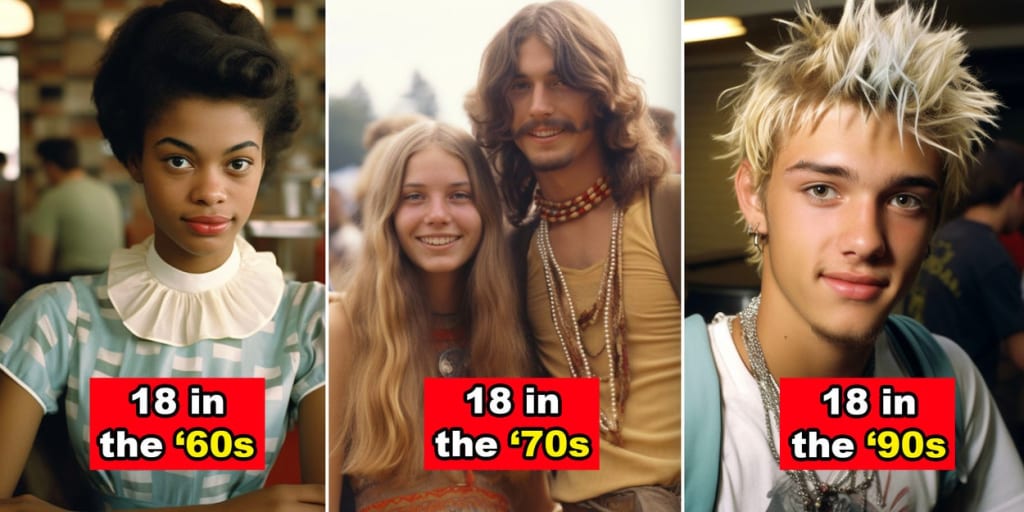Do People Look Older in Photos from the Past?
Navigating the Illusions of Age: Where Fashion, Nostalgia, and Biology Intersect

The question of whether people used to look older in the past has intrigued many. A simple browse through old high school yearbooks often reveals teenagers who appear surprisingly mature. For instance, the renowned astronomer Carl Sagan looked like a typical teenager at 18, but many historical photos depict young people who look significantly older than their modern counterparts. This phenomenon, often discussed on social media, has sparked debates and memes that make us question our perception of age across generations.
Retrospective Aging: A Social Media Phenomenon
The concept of "retrospective aging" suggests that people seemed older at a younger age in the past. This notion gained traction when Twitter user Brandon McCarthy highlighted how people in their early twenties from previous decades appeared more mature. Users responded by sharing photos of their parents and grandparents, showcasing young adults who seemed much older than today's youth. This prompted a broader discussion about whether this perceived aging is real or an illusion.
Scientific Insights into Slower Aging
Interestingly, research supports the idea that humans today age more slowly than in the past. Studies from Yale and USC have shown that lifestyle changes, better nutrition, reduced smoking rates, improved healthcare, and skincare practices (like sunscreen use) contribute to this slower aging process. For instance, a study comparing metabolic, cardiovascular, inflammatory, kidney, liver, and lung function over time revealed that today's 60-year-olds are physiologically similar to 56-year-olds from the early 1990s. Similarly, 40 is the new 37.5, and 20 is the new 19. These findings underscore the significant impact of modern advancements on our biological aging process.
"Between the early 1990s and the late 2000s, 60 became the new 56, 40 became the new 37.5, and 20 became the new 19, reflecting the significant impact of modern advancements on our biological aging process."
The Role of Cosmetic and Fashion Trends
Cosmetic changes, especially in dentistry and orthodontics, have also played a significant role in how faces have changed over the decades. Media analysis from the 1930s to today shows a notable increase in the exposure of larger lips across all ethnicities. Fashion and grooming trends further amplify the perception of age. For example, high school seniors in the 1970s sported hairstyles and clothing that now seem characteristic of much older individuals. This highlights how superficial styles and mannerisms significantly influence our perception of age.
The Illusion of Retrospective Aging
The illusion of retrospective aging is also shaped by how we remember the past. When we recall older generations, we often do so through a nostalgic lens, influenced by the cultural and stylistic norms of their time. This creates a skewed perception that people used to look older. Furthermore, when we see photos of young people from past decades, they often appear more mature because they adhered to the fashion and grooming standards of their era, which differ from today's trends.
"Nostalgia shapes our memory of past generations, making us believe they looked older than they did, influenced by the cultural and stylistic norms of their time."
Changing Modes of Self-Expression
Self-expression modes, including clothing, hairstyles, accessories, makeup, mannerisms, language, and body language, constantly evolve. What is considered youthful or mature at any given time is influenced by these shifting norms. As people age, they often continue to use the styles and mannerisms they adopted when they were younger, which eventually become associated with older generations. This reinforces the perception that people in the past looked older because they dressed and behaved in ways that are now seen as outdated.
"As people age, they often retain the styles and mannerisms of their youth, which become associated with older generations, reinforcing the perception that people in the past looked older."
Conclusion
The phenomenon of retrospective aging is both real and illusory. While modern advancements in healthcare, nutrition, and lifestyle have indeed slowed the aging process, much of the perception that people used to look older stems from changes in fashion and grooming trends. As societal norms evolve, so do our perceptions of age, influenced by the styles and behaviors that define different generations. Understanding this complex interplay helps demystify why people in old photos often appear older than their modern counterparts, revealing that much of it is an illusion created by changing times.
About the Creator
Mojalefa Mokoena
Discover the world through the eyes of Mojalefa Mokoena, a passionate storyteller from the heart of South Africa. Mojalefa's narratives blend cultural richness with contemporary insights, offering a unique perspective on global themes
Enjoyed the story? Support the Creator.
Subscribe for free to receive all their stories in your feed. You could also pledge your support or give them a one-off tip, letting them know you appreciate their work.






Comments (1)
very well written .I hope you find my stories interesting.